
If your independent garden center has a landscape design department, you already know that outdoor living is hitting new heights. Interest in outdoor areas as extensions of indoor living spaces has gone from curiosity and hope to expectation and demand. When homeowners drop in on your designers, true outdoor living is likely part of their plan.
But, like everything in this industry, outdoor living is evolving as new homeowners join the ranks and existing homeowners enter new phases of life and outdoor style. And there’s no getting around geography. From plant selection and design to hardscapes and backyard uses, your climate has a lot to say about it all.
To help your IGC stay in step with the latest outdoor living trends, we spoke with four landscape design pros in four regions of the U.S. for the latest news in outdoor rooms and plantings in their zones.
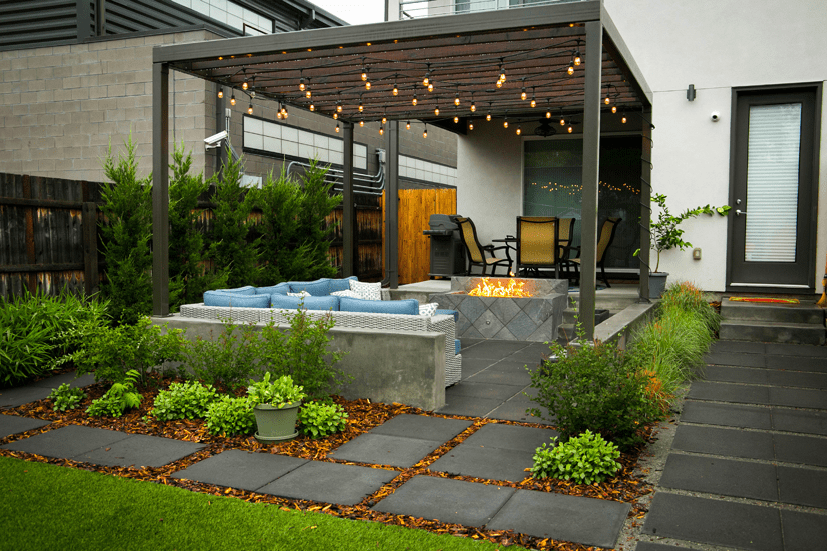
Insights from the Northeast

For clients of Kline Brothers Landscaping in Manahawkin, New Jersey, life on the Jersey Shore revolves around outdoor space. Over the last five years, owner Josh Kline has an increasing emphasis on modern design. “Everything from hardscapes to plants is going for a more modern, contemporary look,” he says.
As part of that shift, Northeast consumers are seeking clean lines created with crisp hedge-like rows of grasses, hydrangeas or crepe myrtle. “Everything’s very linear now. That’s really changing the market. Everything five years ago was more free-form and more lush plantings,” he says.
Tropical transformations, complete with large palm trees, are also trending big in Kline’s region. Never mind that these plants aren’t winter hardy for the area. The Jersey Shore homeowners understand their tropical paradises need to be replanted every year.
Kline’s also seeing interest in native plantings increase among people with ocean front and bay front homes. “They’re going more for the native indigenous plants to the area, like rugosa roses, beach plums and cedar trees. That’s something we’re definitely doing more in our coastal area,” he says.
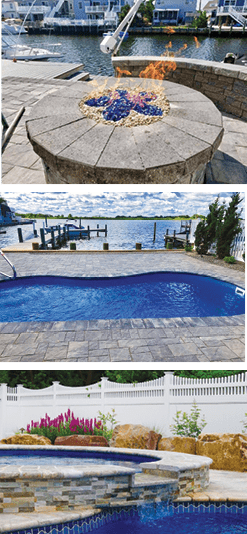
When it comes to Northeast lawns, the focus is on less grass and more decorative hardscapes. Clients are shying away from pavers, which wear over time. The tide is shifting toward materials like natural stone, travertine or porcelain tile. When clients use pavers, they’re often tumbled, rustic-looking options that tolerate wear and still look good.
Clients are using their outdoor space differently, too. “It used to be just a paver driveway or patio in the backyard. Now it’s the whole outdoor living scene: the swimming pool, the outdoor kitchen, the fire pit, the outdoor shower,” Kline says. Sports and game courts are also hot, from basketball and tennis courts to bocce ball to putting greens, with liner plantings framing it all.
“Our season is very short here. The weather is only good for four to five months for outdoor living, but people are spending a lot more time outside,” Kline says. “I always go and visit my clients afterwards to see if they’re using the space ... I show up and there’s 25 people in the backyard. They’re outside all the time, which is great.”
A Southeast outlook

For Brandon Granger, president of Granger Landscapes in Florence, South Carolina, outdoor living has taken a clear turn toward not just spending time outside but spending time with others. “In our residential projects, we’re seeing a big trend with outdoor spaces and patio areas where people are incorporating features like fire pits to add a much more social aspect to their backyards,” he says.
No single theme seems dominant in plant or hardscape materials or design in the area — other than low-maintenance landscapes, which Granger says everyone wants. Instead, clients are heavily influenced by the style of their homes, their neighborhoods and their lot sizes.
When it comes to plant selections, Granger’s clients want plants they’re familiar with through influential marketing efforts and consumer magazines. Encore azaleas are one popular example. “The things that people are aware of is what they want to see and are more likely to buy,” he says.
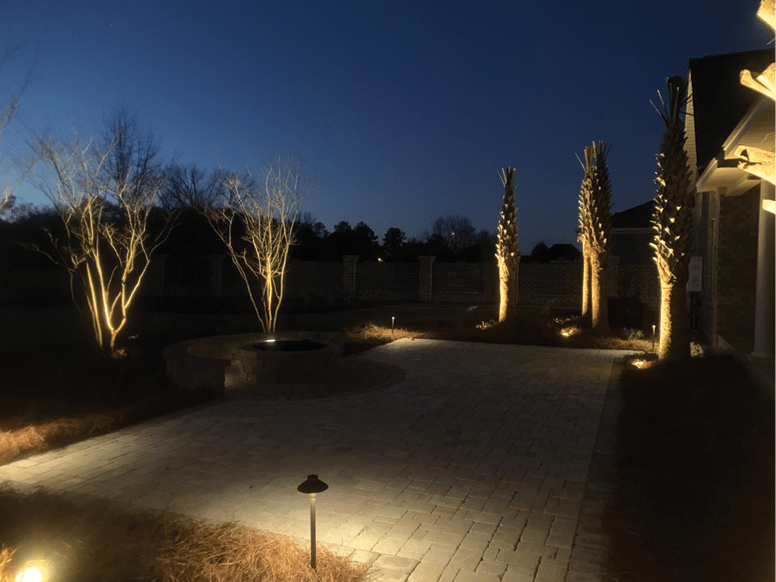
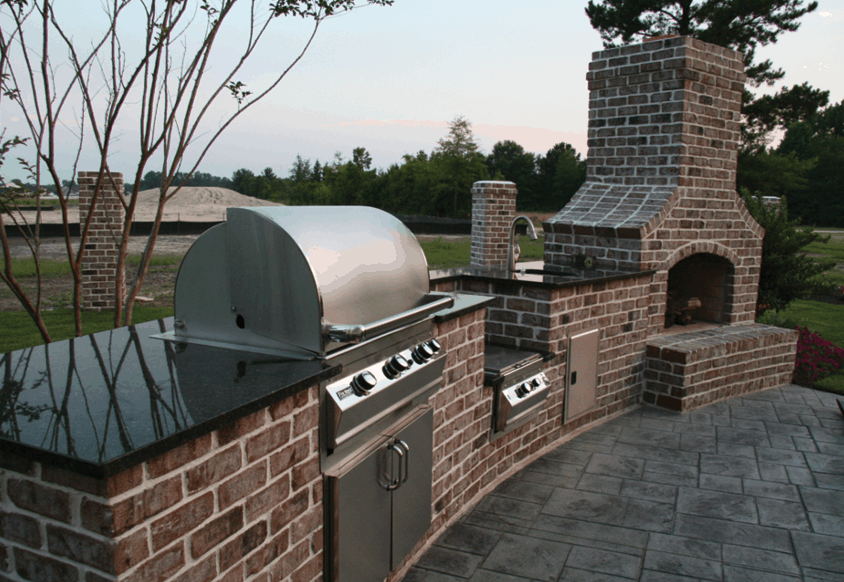
While design themes vary considerably, Granger says that doesn’t diminish the demand for personalization of outdoor living spaces, often enhances by hardscape product choices more than plants. Demand for concrete pavers has grown as product options have increased. “People like the uniqueness of this product that they can have different designs and different textures implemented in their patios,” he says. “Then there’s such a good selection of colors and textures that you can incorporate.”
For Granger’s Southeast customers, it comes back to usability. “Our clients are more interested in having the hardscaping and having a real outdoor space. It’s more of a usable area and not just a backyard with grass and bushes,” he says. “We try to tailor the designs based on their outdoor living needs.”
West Coast wisdom

WATER & EARTH
LANDSCAPE DESIGN
Daly identifies the use of straight lines as a key trend. “Everybody used to want all these very organic lines in their backyard — stone patios and garden beds that were curvilinear and not rectilinear,” he says. But while curved lines are beautiful, Daly says straight lines cost less and are more usable in terms of plants, furniture and features. “Straight lines are definitely taking hold on the industry on both coasts,” he says.
The swing toward leaner, cleaner modern looks reflects a shift away from diverse gardens with four-season blooms. “This more modern outlook on landscaping is using less variety of plant species,” Daly says. Rather than 15 species, it might be five species or five cultivars of the same species. “Softer, more wispy plantings with grasses are a lot more popular because they’re lower maintenance, plus they can cover a lot more space,” he says.
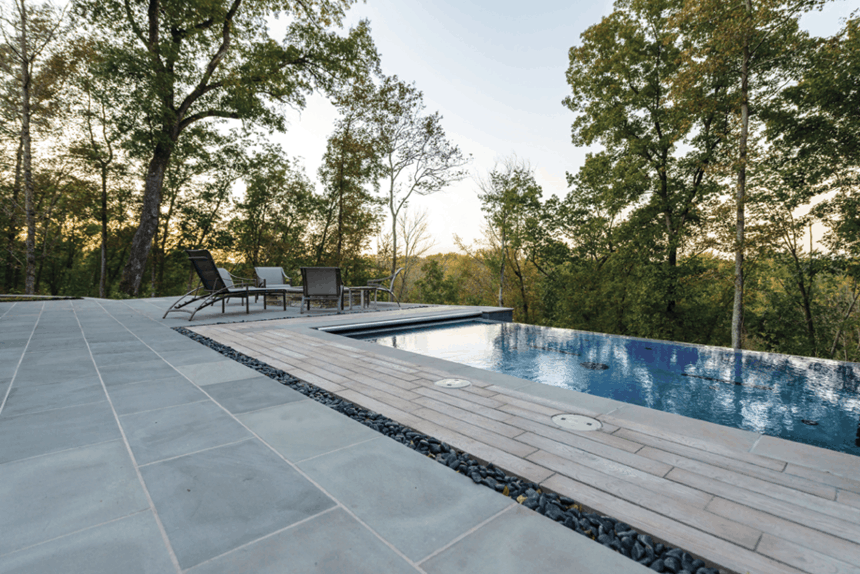
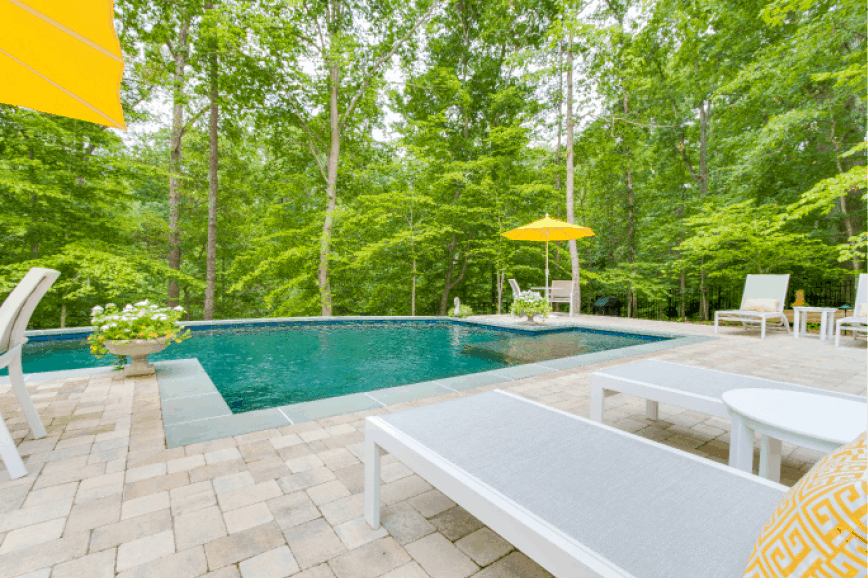
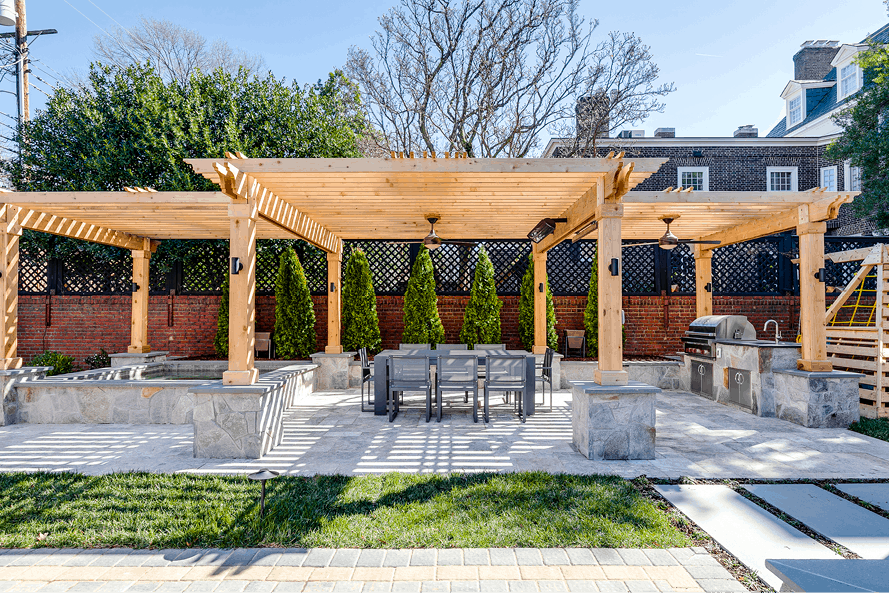
While drought affects Californians more than Virginians, Daly sees less demand for lawn. “Usually it starts as a conversation of people wanting to do it for the earth, but when you get into the nuts and bolts, it comes down to people wanting to specifically spend less on water,” he says.
Similarly, permeability in hardscape surfaces is a leading concern. “What you’re seeing now is a movement away from natural stone,” Daly says. “People are starting to lean a little bit more toward manufactured paving products because they’re permeable and they let water through.” He adds that many California municipalities regulate the ratios of pervious to impervious hardscapes for the sole purpose of stormwater conservation.
Daly advocates for fewer outdoor features, such as kitchens, that duplicate indoor rooms nearby. He also urges clients to take a long-term view on outdoor living design. “Younger parents, say 35 to 45 years old, want to be the hotspot. They want to be that house where all the friends come over,” he says. He reminds parents that children are like plants: They grow and have different needs. “That climbing wall for your 14-year-old won’t look very attractive tomorrow,” he says.
A Rocky Mountain overview

As founder and president of Ivy Street Design, Wendy Booth works with a climate peers outside her region may envy. Her Denver, Colorado, home base offers outdoor living enthusiasts warm, dry, relatively bug-free backyards three seasons of the year. “We have a really nice climate for a lot of outdoor living,” she says. “People are adding the amenities and additional elements to make that outdoor space pleasant.”
Booth sees consumer preferences trending toward clean, modern lines in hardscapes, outdoor décor and design. Development of new hardscape materials that stand up to Colorado’s freeze-thaw cycles has expanded client choices from brick, concrete and stone to outdoor-hardy porcelain tiles.
“It’s just added a significantly more trendy-looking design material to our palette that really addresses more of the upper end of the market,” she says. These materials often accompany outdoor re-creations of multiple indoor spaces. Separate outdoor seating areas for couches, chairs and dining tables cohabitate with fire features, retractable shade structures, misters, built-in grills and outdoor TVs.
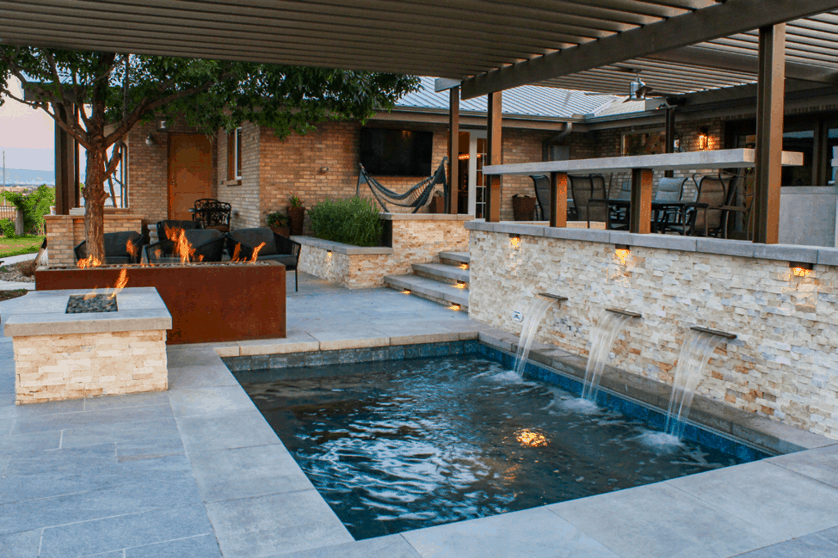
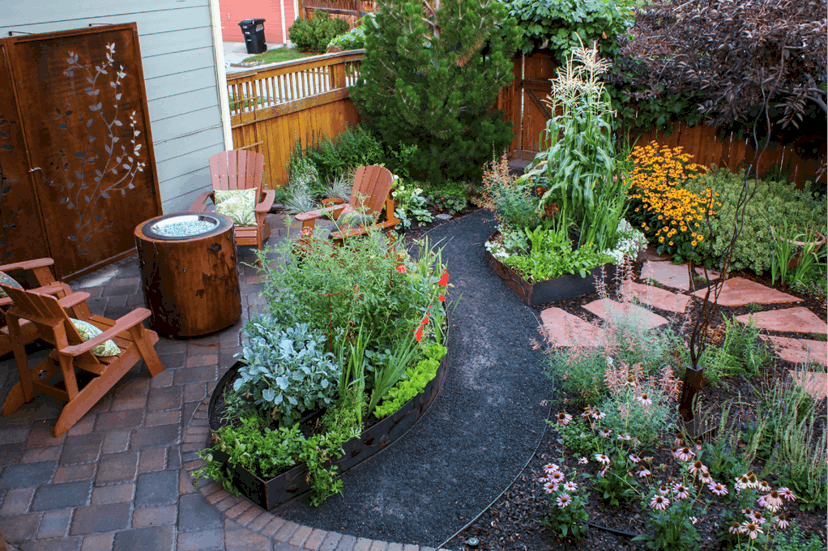
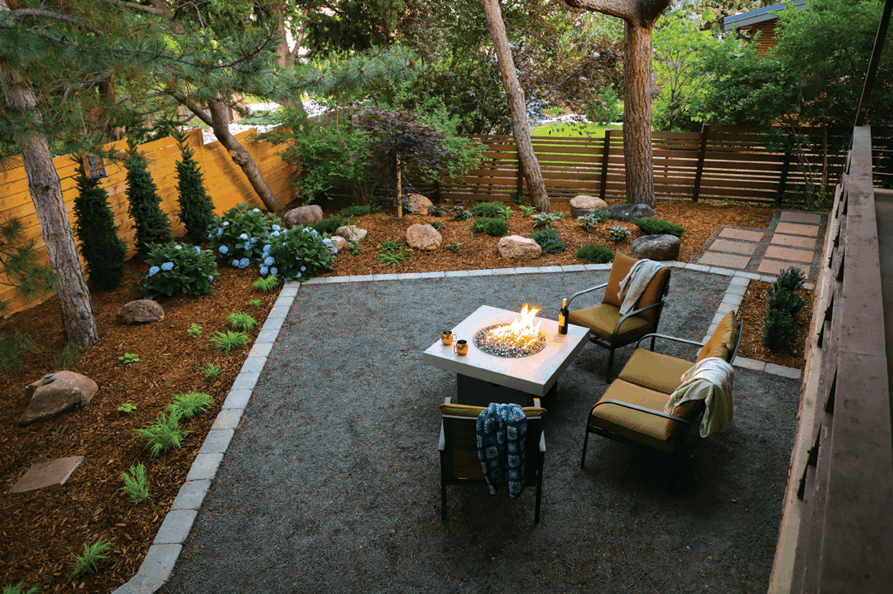
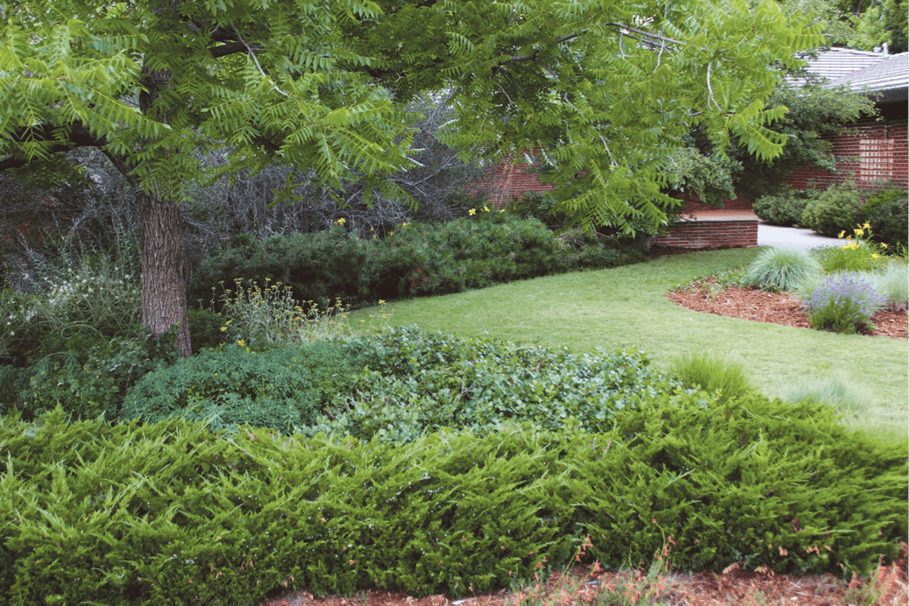
When it comes to plant preferences and selection, Booth notes a conundrum that she hopes garden centers and landscape designers can work together to solve through education, signage and other avenues.
Interest in linear, highly controlled landscapes continues to grow, yet clients often don’t realize the resources required to sustain that modern aesthetic — or reconcile desires for tight rows of Calamagrostis with pollinator and wildlife habitat.
“Horticulturally it’s such a mixed bag because everybody’s talking about pollinators and biodiversity and all these things which are super important, but then they want a modern look and a tree that doesn’t drop anything,” she says. “There’s this conflicted role of wanting to be environmental but not wanting the consequences of a more biodiverse yard.”
For plant-centric clients interested in native plantings and biodiversity, Booth and her team turn to local IGCs. “We really appreciate the role of garden centers in exposing plant-oriented clients to a wider range of horticulture options,” she says. “In trying to create more environmentally responsible landscapes, locally owned garden centers have an enormous role to play in it. They’re so important.”
As these perspectives from across the country suggest, the evolution of America’s outdoor living spaces will continue to roll. By staying in tune with trends in and out of your region, your IGC can help consumers create outdoor spaces where they can live, learn and grow.
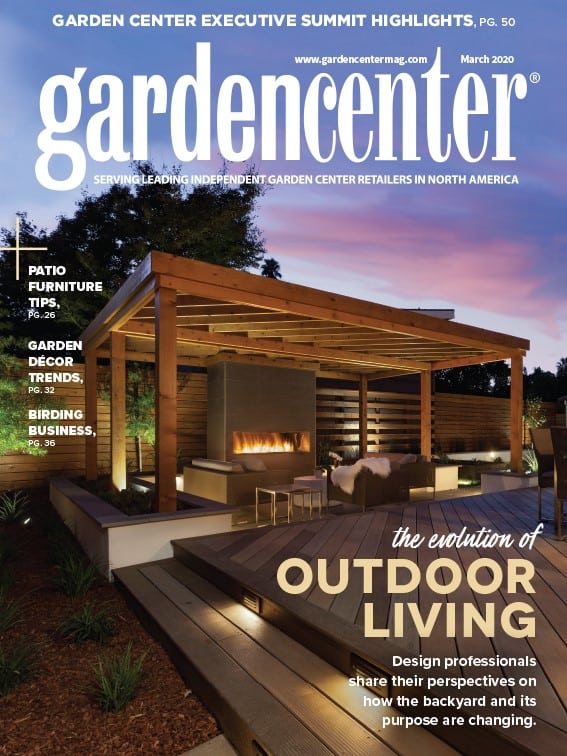
Explore the March 2020 Issue
Check out more from this issue and find your next story to read.
Latest from Garden Center
- GS1 US Celebrates 50-Year Barcode 'Scanniversary' and Heralds Next-Generation Barcode to Support Modern Commerce
- Weekend Reading 7/26/24
- Retail Revival: Making gardening contagious
- ‘Part of our story’
- Registration now open for Garden Center Fertile Ground Webinar Series
- Dramm introduces new hose, sprinkler attachments for home gardeners, nurseries
- Meet the 15 Retailers' Choice Awards winners from Cultivate'24
- 2024 Top 100 Independent Garden Centers List





